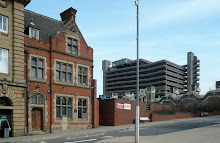 28th March - 2nd May 2009
28th March - 2nd May 2009 Open Tuesday- Saturday 11am - 5 pm
This is the first in a series of exhibitions, which will tour to AirSpace Gallery in the UK in March and continue to develop as it moves on from there. The accompanying publication comprised of specially commissioned artworks by Paul Rooney, Heather and Ivan Morison, Richard T. Walker, Annika Ström, Ian Brown, Ryan Gander, Francis McKee and Alex Pearl will be also available at DCP.
Trying To Cope With Things That Aren't Human (Part One) places us in a familiar position, one where we struggle to deal wit the things around us, unable to completely understand how technology works but simultaneously unable to truly understand the beauty of nature. We remain confused but still standing - between the things that we have made and the things that w have not, what could be called the invented world and the natural world. We struggle to understand the natural world without ourselves in it. So we turn away to the security of the invented world, the one that we have created. As much as enduring a wilderness, the most minor of domestic tasks can become a difficult exercise in personal maintenance survival.
To the extent that it discusses difference, this exhibition also tries to find the common ground, or indeed the threshold, between out inability to cope with the things that we have created, to make our lives easier, and our struggle to relate to the wonders of the natural world. We find it equally as difficult to comprehend the beauty of a vast landscape as we do the best way to use our computer, or indeed how it works. It is maybe only right that both the invented world and the natural world could also be equally and simultaneously called non-human. Often viewed as a dichotomy, technology and nature actually have a fluid relationship, one which judders and jerks all the time, rubbing them up against one another. In many ways technology has allowed us to have access to the natural world but our own obsessions with out ability to invent often distracts us and allow us to ignore it.
Equally, natural sciences provide us with with clear ways in which we can develop out technological tools. The production of art in itself has been affected by these opposites, allowing a relationship to from. This can be seen in recent examples of artists producing work during residencies in local such as the Antarctic. Is this how we see/define ourselves - Between the two? Or do we indeed define ourselves by the struggle to deal with them? Is it this struggle - the trying and the coping - That makes us Human?





